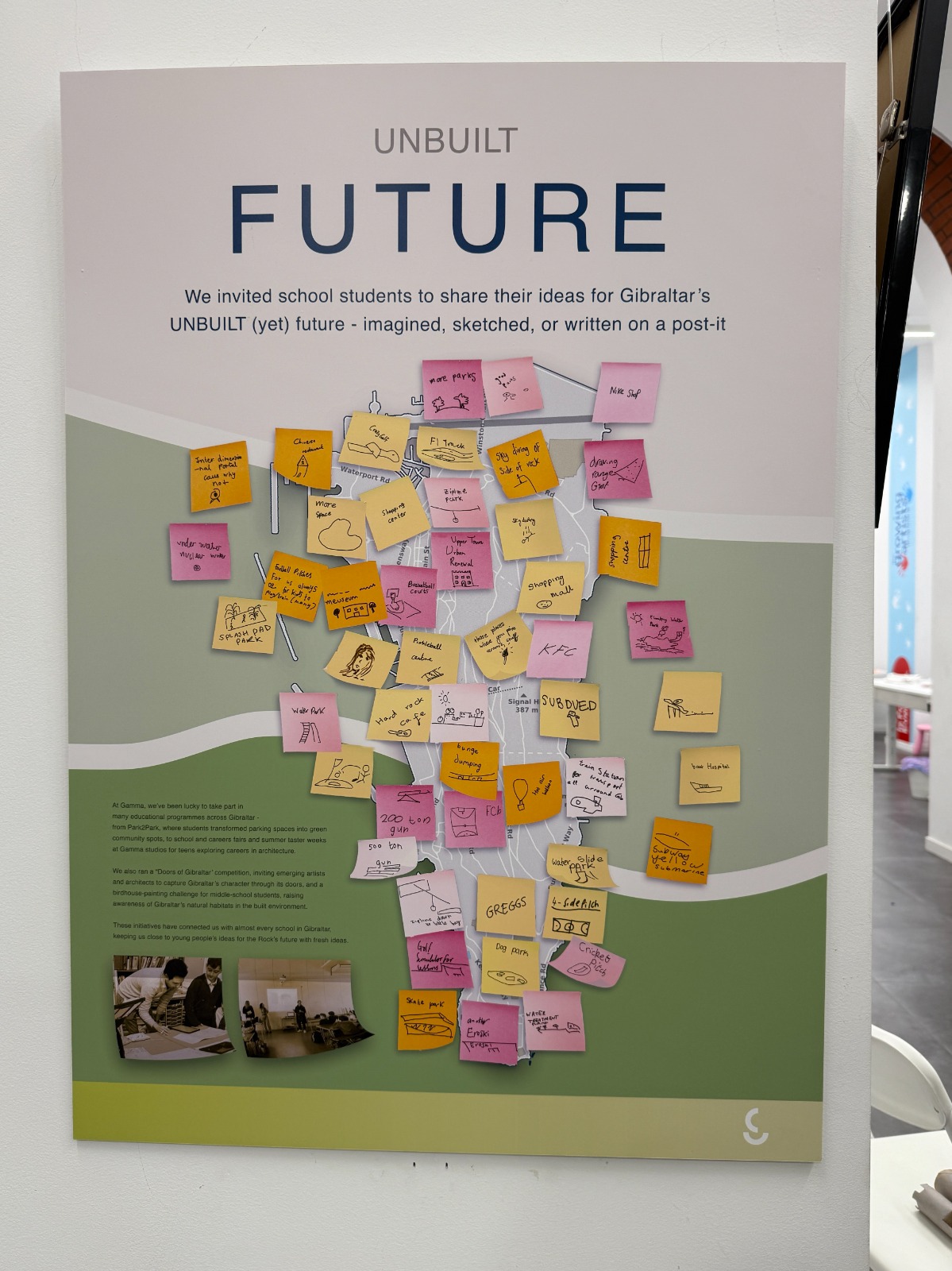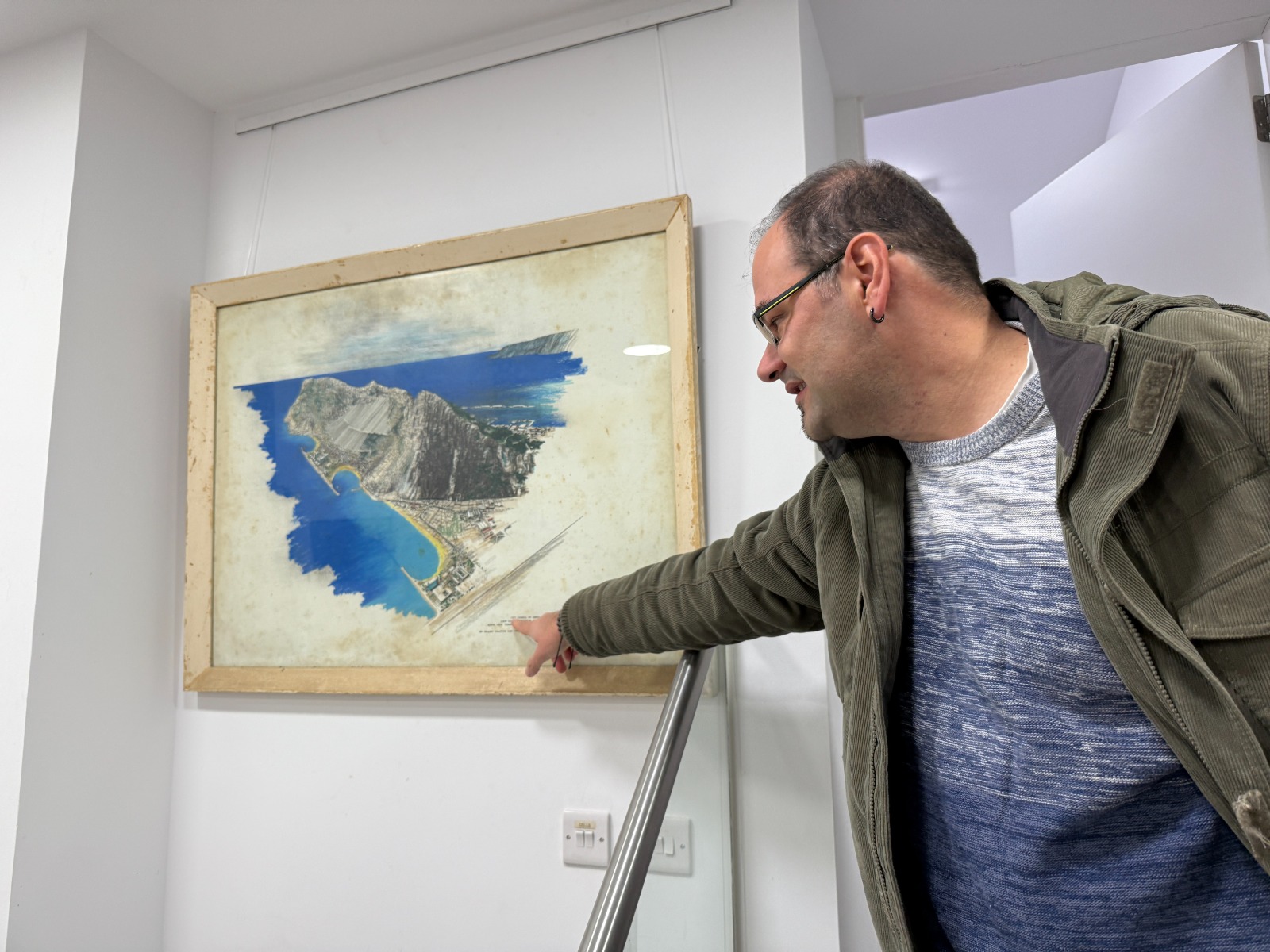Exhibition explores Gibraltar’s unbuilt projects and urban ambitions
Photos by Eyleen Gomez
Architects, planners and members of the Development and Planning Commission gathered at the Growing Artists Hub in Irish Town for the opening of “Unbuilt Gibraltar 2025”, an exhibition that explores alternative visions of Gibraltar’s urban landscape and projects that never made it off the drawing board.
The exhibition, which was initially planned for just two days, has been extended and will now also be open on Monday and Tuesday of next week.
Contributors, some of whom presented their work on the night, included sponsors Garcia+Cox Architects and Gamma Architects, as well as Orfila Architects, GCA Architects, WRSM Architects, Montagu Group, AKS, Arc Design, the Gibraltar Garrison Library, the Gibraltar Heritage Trust, Mel Martinez and the Town Planning Department.
Short presentations, delivered in reverse alphabetical order, offered insight into how various projects were conceived and why they never came to fruition.
Attendees, along with members of the public visiting the exhibition, are invited to mark their favourite projects and ideas with coloured stickers as part of an interactive feedback exercise.
A number of presentations focused on Gibraltar’s long history of land reclamation and how reclaimed spaces have shifted in use over time.
Presenters highlighted how former military sites have evolved into civilian spaces.
“We've seen many reclamations, starting from the 1900s onwards, military uses, and they've been transformed into civilian uses like Queensway Quay, the harbour became a civilian harbour,” said former Town Planner Paul Origo.
He said historic plans such as the docks, moles and even the airport were designed with military and strategic aims in mind, but have since become business hubs, residential areas, parks and community spaces such as Queensway Quay, Commonwealth Park and Europa Business Centre.
He added that reclamations, like buildings, inevitably change over time because societal needs and architectural visions change.
The East Side and the 1990s Europort reclamation were highlighted as examples of how initial concepts often differ greatly from the final built environment, disappointing some while creating new opportunities for others.
“My point in all this is that, like buildings, reclamations, change over time, and they have to change over time, because we change over time,” Mr Origo said.
“Your architects change over time, and competitions change over time, and we will decide definitely over time.”

Notable projects on display ranged from a low-rise development off Western Beach and the runway, to ambitious marina expansions and a proposal to turn Chilton Court into a high-rise development, none of which were realised.
Other presentations examined ideas to link areas with green corridors, modernise facilities and promote sustainable urban mobility along key routes such as Watergardens.
As attendees reflected on projects that never materialised and the lessons they hold for the next generation of planners, Nigel Garcia from Garcia+Cox Architects spoke about the changing face of Gardeners View.
“Each proposal, built or unbuilt, tells a story about Gibraltar’s ambitions and evolving identity,” he said.
The interactive nature of the exhibition encouraged public participation, with guests asked to suggest sites for future design competitions and to share their feedback on the work on display.
Children were also invited to contribute their ideas for Gibraltar’s future. Alongside suggestions for a Greggs, bungee jumping and a Formula One track, they called for more play areas for children over the age of 10, additional football pitches and even a “boat hospital”.

One of the Town Planning officials behind the exhibition is Hungarian planner Roland Láposi, who first came to Gibraltar from Scotland in 2013.
“I was here shadowing the town planner and our colleagues who were working at the time…I spent a week with them. Not everybody remembers that, but I do,” he said.
After returning years later as a tourist, he reconnected with former colleagues.
“I took the effort to catch up with the guys. Remember me, sort of, and then when there was a time…where there was a town planning position. So I thought why not [apply]? My family loved it, so I did, and I got it.”
Reflecting on the changes he has seen between his first visit in 2013 and moving to the Rock in 2023, he said: “Many more buildings were refurbished or regenerated.”

He recalled earlier conversations about urban renewal and other projects that never happened, adding that exhibitions elsewhere also helped inspire “Unbuilt Gibraltar 2025”.
“Having an unbuilt exhibition like this is not so unique. It just never happened here... but it’s always a safe thing, because if you time it correctly... you can have a conversation about anything... and that can spark forward-looking conversations as well,” he said.
“It was a bit deliberate, kind of provocative, a little bit, but also in a safe ground for them to come together or come forward with things they have.”
The exhibition even includes some unexpected material from deep in the planning archives.
“There are things which are, we know of it, but they never became an application, even so they are not part of the public records as such... But we don't have any drawings about that, just a model,” Mr Láposi said.
“Unbuilt Gibraltar 2025” brings together these models, drawings and concepts to invite a wider conversation about how Gibraltar has been shaped, and how future projects might reflect the Rock’s evolving needs and ambitions.









